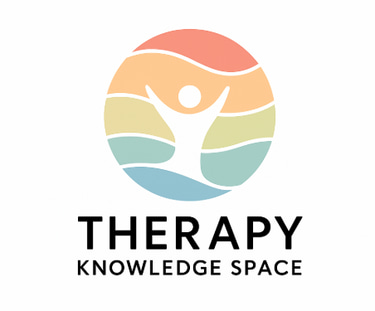Transform Your Therapy Practice with Evidence-Based Handouts and Worksheets
Therapy doesn’t stop at the end of the session—and neither should healing. This in-depth guide explores how evidence-based therapy homework improves client outcomes, including key worksheets for anxiety, depression, PTSD, and emotional regulation. Learn how to integrate practical tools into your clinical practice and why the right assignments can drive long-term change.
5/8/20242 min read


Whether you're a private practice therapist, a psychiatric NP, or a clinician in a high-volume setting, the following tools can radically increase the value of each session:
Printable CBT Worksheets for Anxiety
CBT remains one of the most well-researched treatments for anxiety, and its structured worksheets are ideal for homework. These include:
Thought distortions worksheets
Exposure hierarchies
Safety behavior trackers
Clients benefit from having something tangible to return to when panic or avoidance sets in. CBT handouts help them challenge cognitive distortions in real time, not just during the session.
Depression Activity Logs and Journals
Behavioral activation is the cornerstone of most depression treatment. Homework like mood tracking charts, sleep logs, and “small wins” journals reinforce progress and create structure. Clients often report that the act of writing down even one positive activity per day begins to shift their self-perception over time.
PTSD Symptom Trackers and Grounding Exercises
Trauma-informed handouts can guide clients through distress tolerance, memory integration, and somatic regulation. Worksheets may include:
Window of Tolerance guides
Trigger mapping
Grounding technique logs
Clients who use these tools between sessions are more likely to build confidence in navigating trauma responses independently.
Coping Skills Worksheets for Emotional Regulation
Emotional dysregulation doesn’t resolve in a 50-minute hour. DBT-based handouts—such as distress tolerance charts or opposite action logs—help clients practice skills in real-life moments when emotions spike. These tools are especially effective with teens, clients in crisis, and those with BPD traits.
Values and Identity Work
Clients struggling with anxiety, depression, or burnout often benefit from exercises that reconnect them to personal values. Worksheets that explore core beliefs, ideal future selves, or identity roles help rebuild internal motivation. This work is powerful and especially effective in post-therapy relapse prevention.
Nurse Practitioner Mental Health Handouts
In primary care and integrated settings, NPs are often asked to support mental health in short bursts. Therapy homework can bridge that gap. Tools like anxiety screening sheets, stress logs, and behavioral activation guides can empower patients to engage meaningfully in their care without a therapist on hand 24/7.
At-Home Assignments for Clients Between Sessions
Sometimes, the best homework isn’t a worksheet—it’s a practice. Guided meditations, journaling prompts, gratitude tracking, or even a “self-kindness challenge” can create ripple effects throughout the week. These assignments improve retention, promote self-efficacy, and give clients something constructive to hold onto.
How to Introduce Therapy Homework to Clients
You don’t need a formal protocol to begin using therapy homework effectively. Here’s a simple method that works across modalities:
Set it up early. Let clients know in the first few sessions that between-session work will be part of the process.
Collaborate. Ask clients what kind of homework feels doable. The more they buy in, the more they’ll follow through.
Check in. Don’t assign and forget. Review the homework next session. If they didn’t complete it, explore why without judgment.
Adapt as needed. If a worksheet doesn’t resonate, change it. The goal is engagement, not compliance.
The Bottom Line
Therapy homework isn’t a checkbox. It’s a clinical strategy—one that gives your clients more time to heal, more space to grow, and more tools to take with them when therapy ends.
So whether you’re using printable CBT worksheets for anxiety, depression mood charts, PTSD grounding tools, or client-friendly DBT logs, know this: You’re not just handing out paper. You’re reinforcing transformation.
